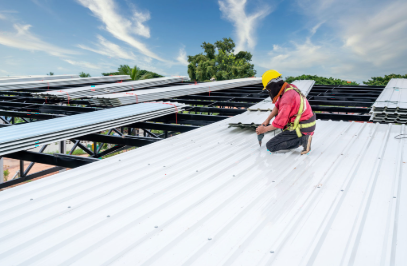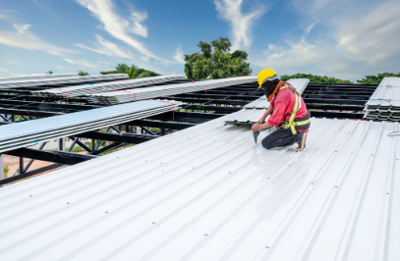A roof replacement is a significant home improvement project, one that involves careful planning, skilled labor, and a considerable investment. Understanding the timeline and the various stages involved can help homeowners prepare for the process and ensure a smooth and successful outcome. This article provides a comprehensive guide to the Irving roof replacement timeline, outlining what you can expect from start to finish.
Planning and Preparation: Laying the Groundwork
Before any work begins on your roof, a significant amount of planning and preparation is necessary. This stage involves assessing your needs, choosing the right materials, and selecting a qualified contractor.
The first step is to determine the scope of your roof replacement. Is it a simple repair or a complete overhaul? Consider factors like the age and condition of your existing roof, any underlying structural issues, and your budget. This assessment will help you determine the best course of action and choose the right materials for your new roof. The next step is to choose the right materials. Roofing materials come in a wide array of styles, colors, and price points. Consider factors like durability, longevity, aesthetic appeal, and energy efficiency when making your selection. Asphalt shingles are a popular choice for their affordability and ease of installation, while metal roofs offer exceptional durability and energy savings. Tile, slate, and wood shakes offer unique aesthetic qualities but come with higher price tags.
When choosing a qualified and reputable roofing contractor seek recommendations from friends, family, and neighbors, and check online reviews and ratings. Obtain multiple quotes and compare prices, ensuring the contractors are licensed and insured. Don't hesitate to ask about their experience, warranties, and project management approach.
Pre-Construction Phase: Getting Ready for the Big Day
Once you've chosen a contractor, the pre-construction phase kicks off, involving several key steps to get the project rolling. This includes thoroughly reviewing the contract to ensure it covers all the important details, such as the scope of work, materials used, payment schedule, and warranty information. Don't hesitate to ask your contractor any questions or clarify anything that seems unclear before signing on the dotted line. Next, it's essential to ensure all necessary permits are obtained, a process your contractor should typically handle. Work with your contractor to set a start date that fits your schedule and considers weather conditions, keeping in mind that roof replacements are often weather-dependent and may be subject to unexpected delays.
The Roof Replacement Process: A Step-by-Step Guide
The actual roof replacement process typically involves several key stages, each with its own timeline and considerations:
Site Preparation and Protection. Before work begins on your roof, the contractor will prepare the site by laying down protective tarps and covering landscaping to prevent damage from falling debris.
Removal of the Old Roof. The old roofing materials, including shingles, underlayment, and flashing, will be carefully removed and disposed of properly.
Inspection and Repair of the Roof Deck. Once the old roofing is removed, the contractor will inspect the underlying roof deck for any damage or rot. Any necessary repairs will be made before installing the new roof.
Installation of the New Roof. The new roofing materials will be installed according to manufacturer specifications and local building codes. This includes laying down underlayment, installing flashing, and attaching the chosen roofing material, whether it's shingles, metal panels, or tiles.
Cleanup and Final Inspection. After the new roof is installed, the contractor will thoroughly clean up the site, removing all debris and ensuring the property is left in good condition. A final inspection will be conducted to ensure the roof meets all quality and safety standards.
Post-Construction Phase: Wrapping Up the Project
The first step in this phase is a comprehensive walk-through with your contractor. This is your opportunity to carefully inspect the completed work, ensuring everything meets your expectations and the terms outlined in the contract. Pay close attention to the quality of the installation, checking for things like proper shingle alignment, secure flashing around chimneys and vents, and the overall appearance of the roof. If you have any questions or concerns, don't hesitate to raise them with your contractor during the walk-through. A reputable contractor will be happy to address any issues and ensure you're completely satisfied with the finished product.
Once you've inspected the new roof and are satisfied with the work, it's time to finalize the project. This typically involves signing off on the completion of the work and making the final payment to the contractor according to the agreed-upon schedule outlined in the contract. Be sure to keep records of all payments and any relevant documentation for your own records.
Your new roof is a significant investment, and you want to ensure it lasts for many years to come. This is where warranties and proper maintenance come into play. Obtain warranty information from your contractor, carefully reviewing the terms and conditions. Understand what is covered by the warranty, the duration of coverage, and any specific requirements for maintaining its validity. It's also a good time to discuss any recommended maintenance practices with your contractor. This might include periodic inspections, gutter cleaning, and prompt repairs of any minor damage. By following these recommendations, you can help maximize the lifespan of your new roof and protect your investment.
Factors Affecting the Timeline

While the typical roof replacement follows a predictable timeline, several factors can influence the overall duration of the project. Being aware of these potential roadblocks can help you set realistic expectations and avoid surprises along the way:
Roof Size and Complexity. The size and complexity of your roof will naturally impact the duration of the project. Larger roofs or those with intricate designs will take longer to replace.
Weather Conditions. Roofing work is highly weather-dependent. Rain, wind, or extreme temperatures can cause delays and extend the project timeline.
Accessibility. The accessibility of your roof can also affect the timeline. Roofs that are difficult to access or have limited workspace may require additional time and effort.
Unexpected Issues. Unexpected issues, such as hidden damage to the roof deck or unforeseen structural problems, can also cause delays and extend the project timeline.
A roof replacement is a significant undertaking, but with careful planning and a reliable contractor, it can be a smooth and successful process. By understanding the various stages involved and the factors that can affect the timeline, homeowners can approach the project with confidence and ensure their new roof provides years of protection and peace of mind. Whether you're opting for a traditional asphalt shingle roof replacement or exploring other roofing in Round Rock TX services, knowing what to expect can make all the difference.







(0) comments
We welcome your comments
Log In
Post a comment as Guest
Keep it Clean. Please avoid obscene, vulgar, lewd, racist or sexually-oriented language.
PLEASE TURN OFF YOUR CAPS LOCK.
Don't Threaten. Threats of harming another person will not be tolerated.
Be Truthful. Don't knowingly lie about anyone or anything.
Be Nice. No racism, sexism or any sort of -ism that is degrading to another person.
Be Proactive. Use the 'Report' link on each comment to let us know of abusive posts.
Share with Us. We'd love to hear eyewitness accounts, the history behind an article.